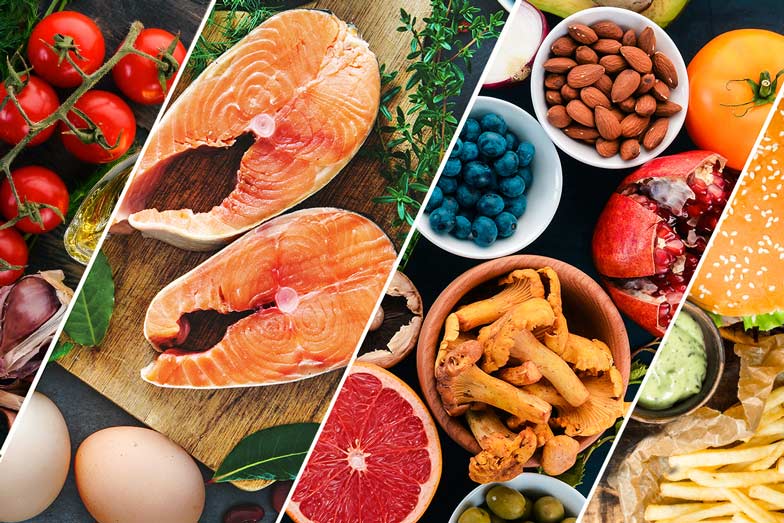What do the four letters in the word “diet” stand for? One popular joke answer — “Do I Eat That?” — is funny because it’s TRUE!
With some diets, not knowing a food’s calorie count can turn mealtimes into minefields. Eat the wrong thing, and your weight-loss plan gets blown out of the water! Plus, many of the calorie-heavy foods guys love — we’re looking at you, bacon, burgers, and maple syrup — are off limits.
That’s where a macronutrient diet comes in. Instead of counting calories, it promotes weight loss by determining the quantity of four macronutrients you need to eat each day.
What’s a macronutrient?
Every bite of food you eat is made up of four macronutrients (or macros): protein, carbohydrates, fibre, and fat. Different foods tend to contain more of one type. Meat, for instance, is packed with protein, bread is carb-heavy, fruits and veggies are full of fibre, and olive oil is primarily fat.
Your body needs all four macros to function properly, so as long as your meals and snacks satisfy your daily macro count, you can eat anything you want!
What’s the catch?
Calculating your daily macro count may sound complicated, but there’s actually a really easy way to do it. Answer a few questions about your age, weight, height, weight-loss goals and lifestyle, and a free online macro calculator will email you how many grams of protein, carbohydrates, fibre, and fat you can eat per day.
Once you know your macro targets, the trick is knowing which foods to eat to hit them. Here, Canada’s new Food Guide comes in handy. Its long list of tasty “protein foods” is exactly what the macro diet calls for, while its “whole-grain foods” represent the carbs and the fruits and vegetables represent…you get the idea.
For the fat, you can use this handy Google calculator to find out how much fat is in various types of meat. For example, a quarter-pound (77-gram) hamburger patty contains 12 grams of fat.
Time to unveil your scale!
Now that you know how the macro diet works and how to figure out your daily food intake, you need to get your hands on an inexpensive food scale to put your plan into action. Your macro targets are based on food weight, after all. Thankfully, these scales cost as little as $15 online and at housewares and kitchen-supply stores.
An awesome success story
If you’re looking for an example of a guy who used the macro diet to lose weight, look no further than Mathieu Bédard. By weighing everything he eats, the Montrealer lost an amazing 110 pounds in just eight months!
Bédard’s advice to other Canadian guys: “You can eat almost all the same foods you’re having now, just in smaller quantities. By controlling portions, you can really make a big difference. It’s far simpler than most people might think.”
To sum up, thanks to the macro diet, the four letters in “diet” can easily stand for “Delicious Ingredients Every Time.”

Let’s Talk!
Did you enjoy this article? Let us know in the comments.
0 Comments